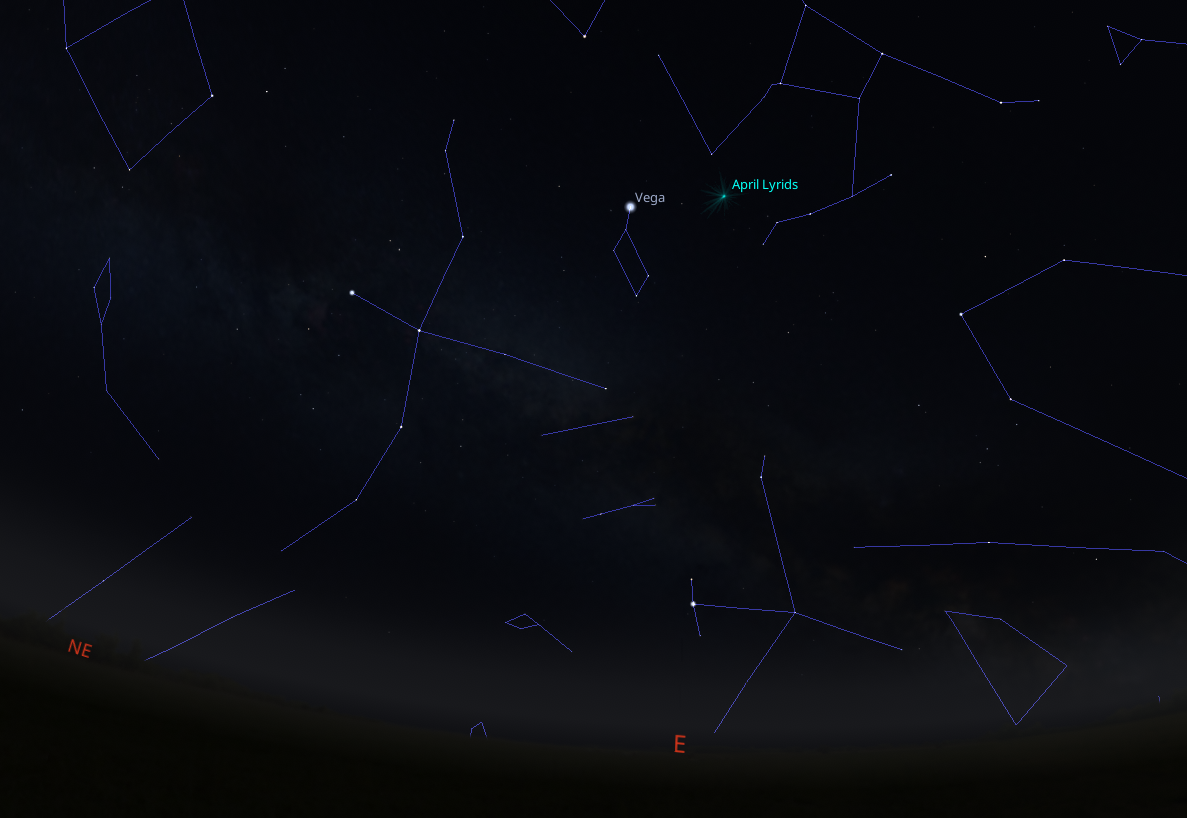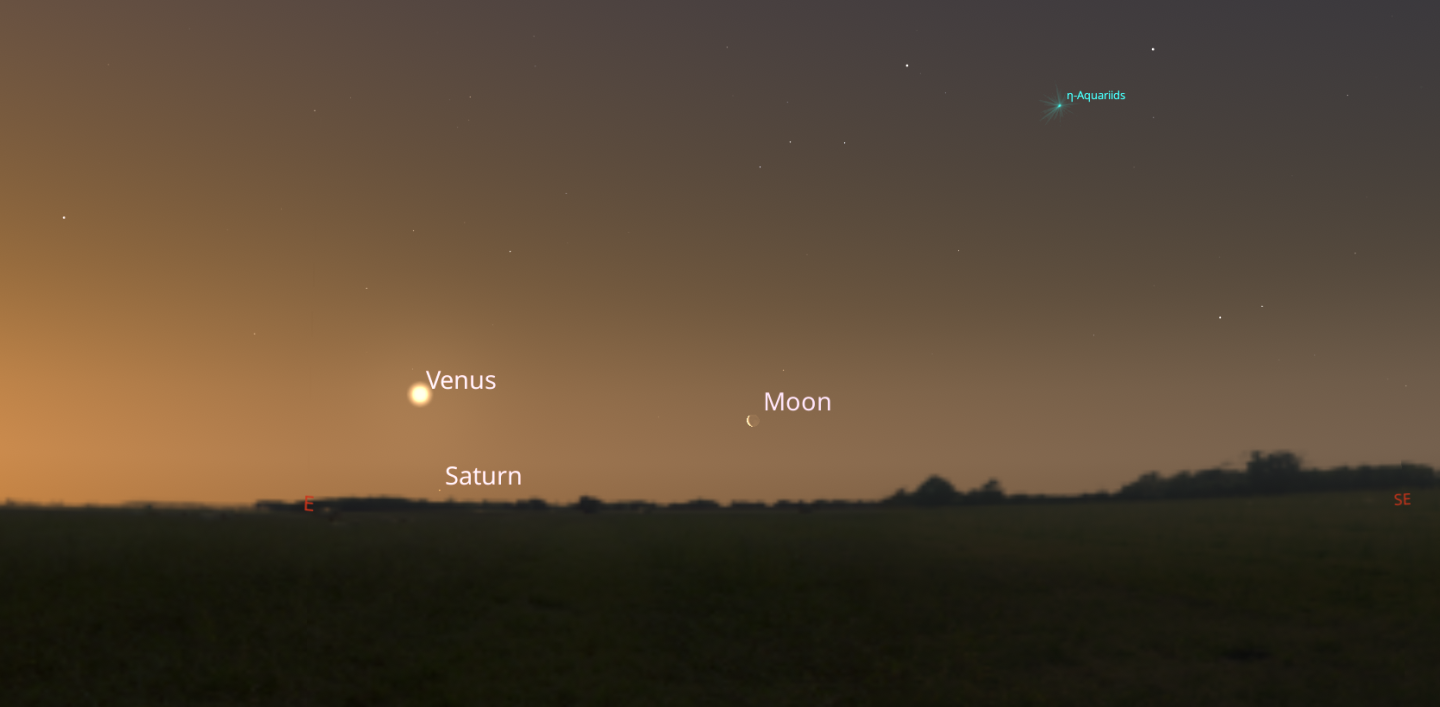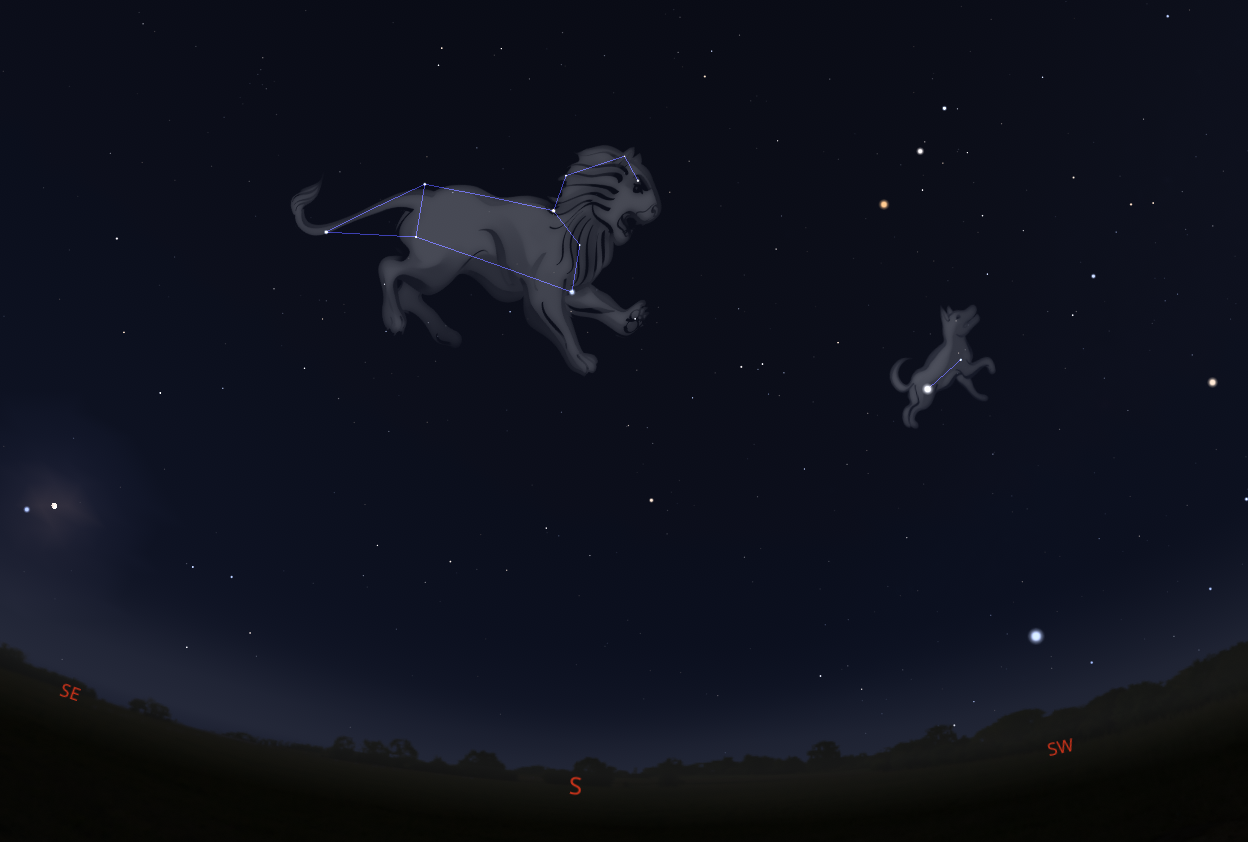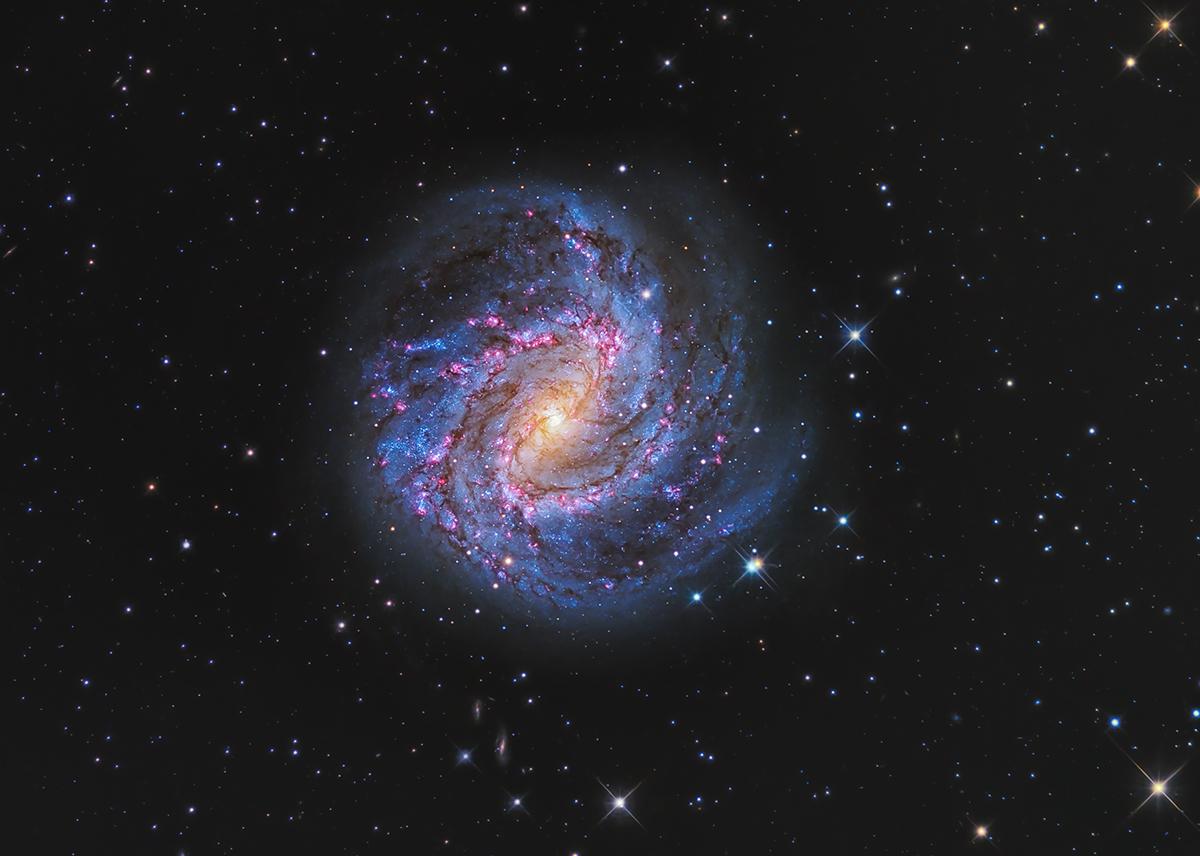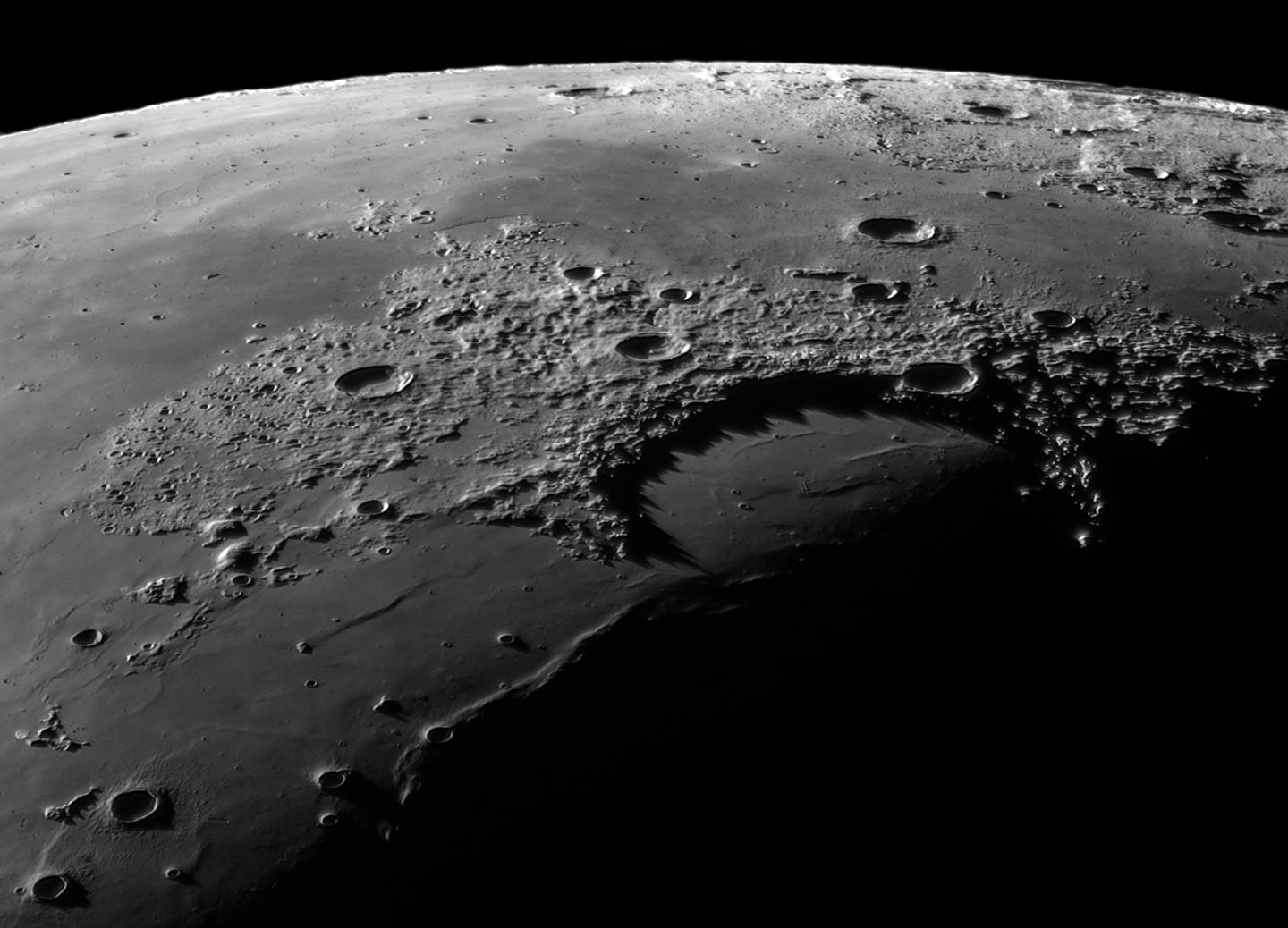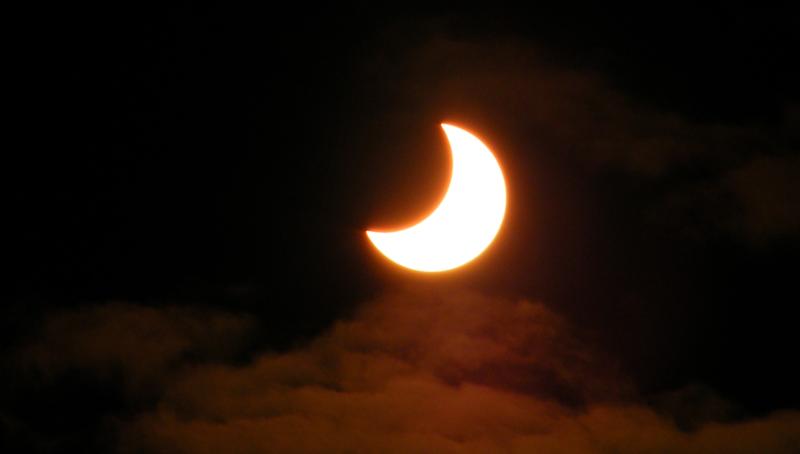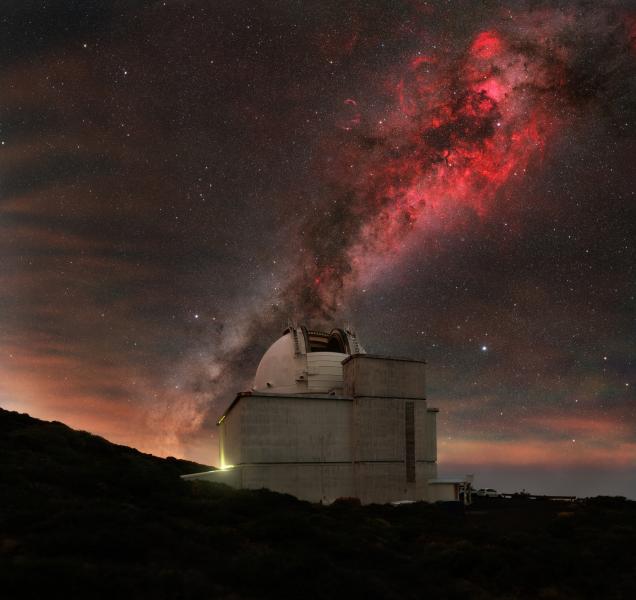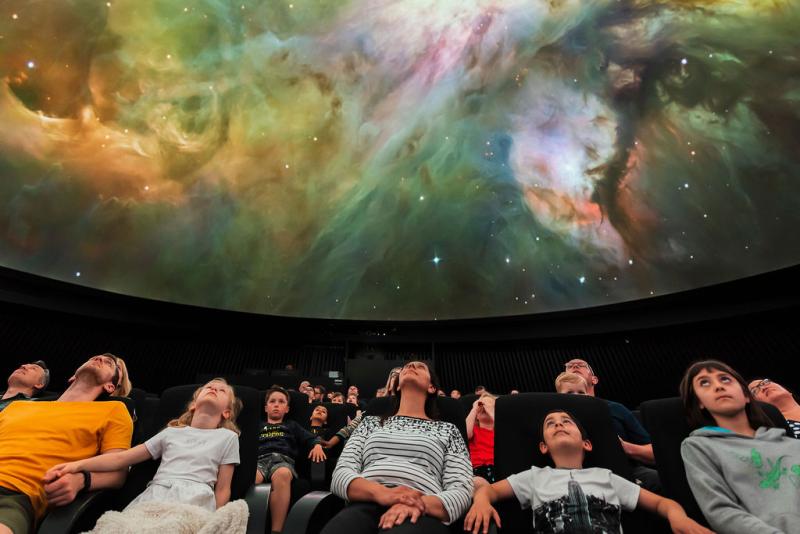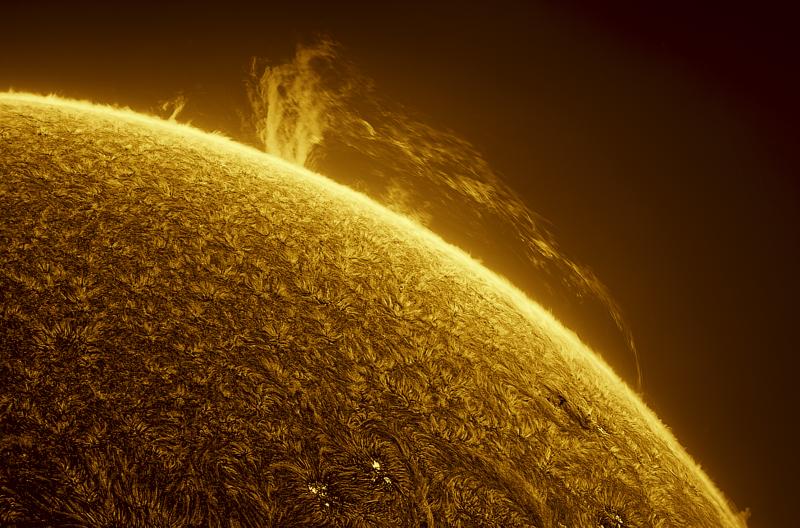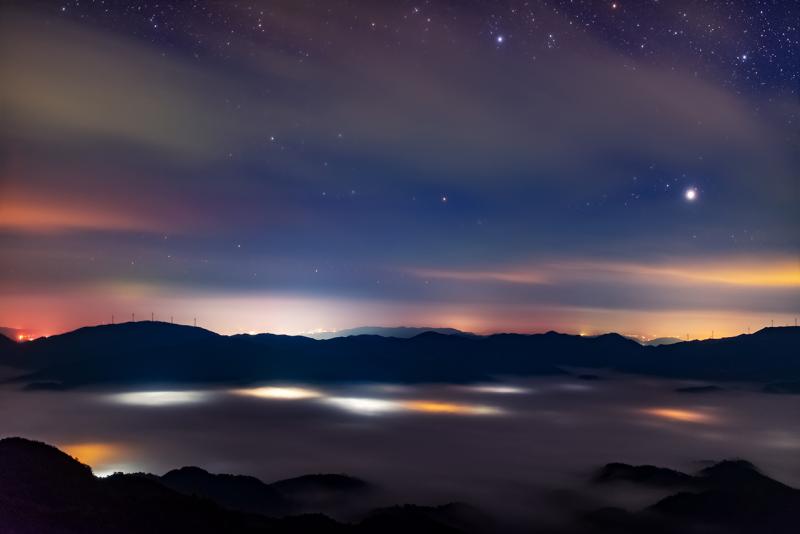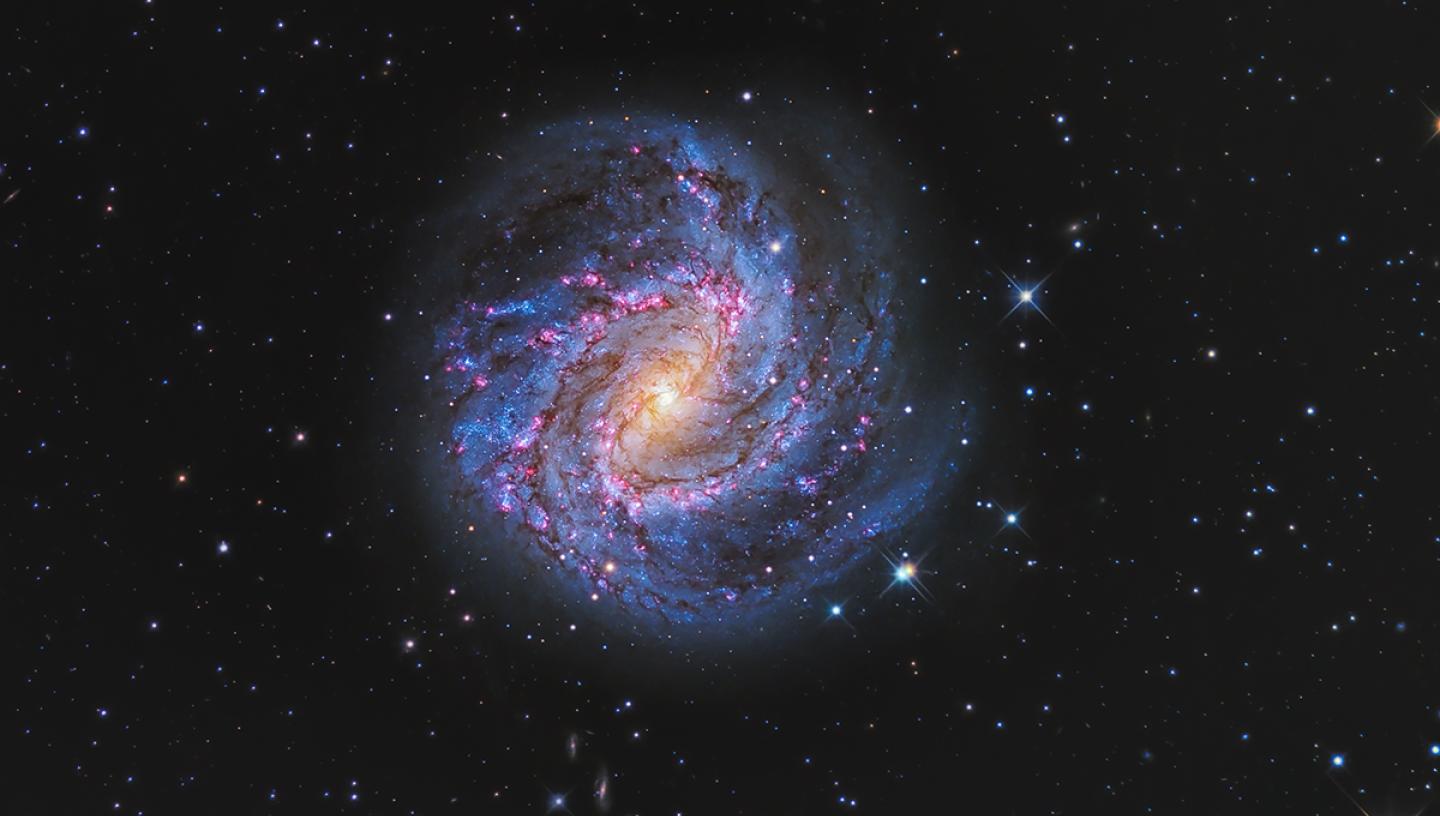
Discover what to see in the night sky this April, from the Lyrid meteor shower to bright inner planets, and more.
Top 3 things to see in the night sky in April 2025:
- 23 April - Catch the Lyrid meteor shower
- 24 April - See Venus at its brightest
- Throughout the month - Look out for Leo the Lion
Details given are for London and may vary for other parts of the UK.
Look Up! Podcast
Discover April's night sky highlights with Royal Observatory astronomers Imo and Jess by listening to our Look Up! podcast. As well as exploring this month’s must-see cosmic objects, they discuss two cosmic news stories: the 128 new moons discovered around Saturn, and some interesting preliminary results about dark energy, which has implications for the end of the Universe! Join us on X at the start of April to be part of the conversation.
The Lyrid meteor shower
The April showers have arrived! The Lyrid meteor shower will be visible from 16-25 April as the Earth passes through the debris left behind by comet C/1861 G1 Thatcher.
Maximise your meteor-spotting chances by heading out during the shower’s peak on 23 April. If you catch them before 4am, you will avoid the obtrusive light pollution from the Moon, as it will be below the horizon before this time. The shower’s peak could offer up to 18 meteors per hour, appearing as bright speedy sparks.
As the name suggests, the meteors will appear to originate from the constellation Lyra, the lyre, visible in the east, but make sure you have a wide view of the sky as the show will be visible in every direction.
The Eta Aquariid meteor shower will also be visible from 19 April until 28 May. This shower favours the Southern Hemisphere and will appear low in the sky for northerly latitudes (such as the UK) in the early predawn hours.
The planets in April
Although the parade of 7 planets may have come and gone, a few still linger, and this time it's all about quality over quantity.
Mercury will reach its greatest elongation west on 21 April, meaning it will be at maximum separation from the Sun in the morning sky. This is one of the best times to view the planet, as Mercury is usually submerged in the light of the Sun. To see it, look towards the eastern horizon right before sunrise.
Is it a plane? Is it a UFO? Nope – it's a planet 100 million kilometres away!
On 24 April we’ll be able to see Venus at greatest brilliance, bringing us a dazzling view of the brightest planet in our skies at its most luminous – and we'll have to wait a year and a half to see Venus this bright again! It’ll be easy to spot in the east shining like a beacon at magnitude -4.7, but like Mercury, you’ll have to be up with the birds just before the Sun has risen in the morning to see it.
Spot Leo the Lion
A great constellation to view this month is Leo the Lion, who can be found chilling in the southern sky.
Unlike many other constellations that require a bit of imagination to see what they represent (looking at you, Canis Minor), the stars that make up Leo are easily identifiable as a lion sitting side on. It’s also common to see the constellation as a mouse – take a look yourself, do you see a lion, a mouse, or something else?
To find Leo, star-hop your way there using the Plough in Ursa Major. Take the two stars farthest from the 'handle' of the saucepan shape, Dubhe and Merak, and continue the line formed between them downwards of the pan until you reach the lion. Using the two stars of the pan closest to the handle, Megrez and Phad, works as well.
You’ll know you’re in the right place if you can spot the quite distinctive pattern of stars known as the “sickle” making up the lion's head, and at its base, the bright star Regulus.
Regulus makes up one vertex of the Spring Triangle, three bright stars that stand out against the spring night sky. The other two are Arcturus in the constellation Boötes and Spica in the constellation Virgo.
In Greek mythology, Leo represents the Nemean Lion, a beast the hero Heracles was tasked with killing as the first of twelve labours. After discovering the lion’s fur was invulnerable to mortal weapons, Heracles had to sneak into its cave while it slept and strangle the lion with his bare hands.
Southern Hemisphere stargazing - the Southern Pinwheel Galaxy
If you’re in the Southern Hemisphere, now is a good time to see M83, a barred spiral galaxy hidden 15 million light years away in the constellation of Hydra. M83, or the Southern Pinwheel galaxy, stretching 118,000 light years across, is known as a 'grand design spiral' due to the clearly defined arms spiralling outwards from its centre. Within these arms are areas with very high rates of star birth. The youngest of these stellar babies are just a few million years old, and form in clusters dotting the edges of the swirling dust lanes, bathing their surroundings in radiation that can be seen as a glowing pink hue.
The Moon's phases in March 2025
First quarter: 5 April (03:15)
Full Moon: 13 April (01:22)
Last quarter: 21 April (02:36)
New Moon: 27 April (20:31)
Stargazing tips
- When looking at faint objects such as stars, nebulae, the Milky Way and other galaxies it is important to allow your eyes to adapt to the dark so that you can achieve better night vision.
- Allow 15 minutes for your eyes to become sensitive in the dark and remember not to look at your mobile phone or any other bright device when stargazing.
- If you're using a star app on your phone, switch on the red night vision mode.
You may also be interested in
Hydra’s Pinwheel © Peter Ward | Shortlisted in Astronomy Photographer of the Year 2022 Galaxies category
